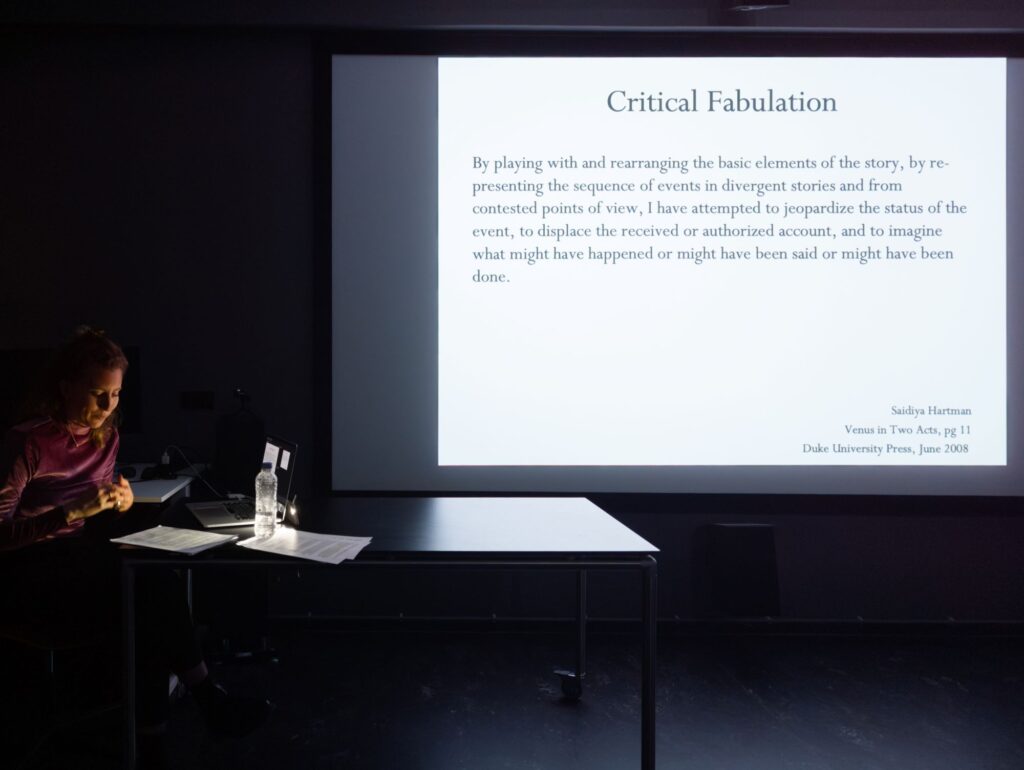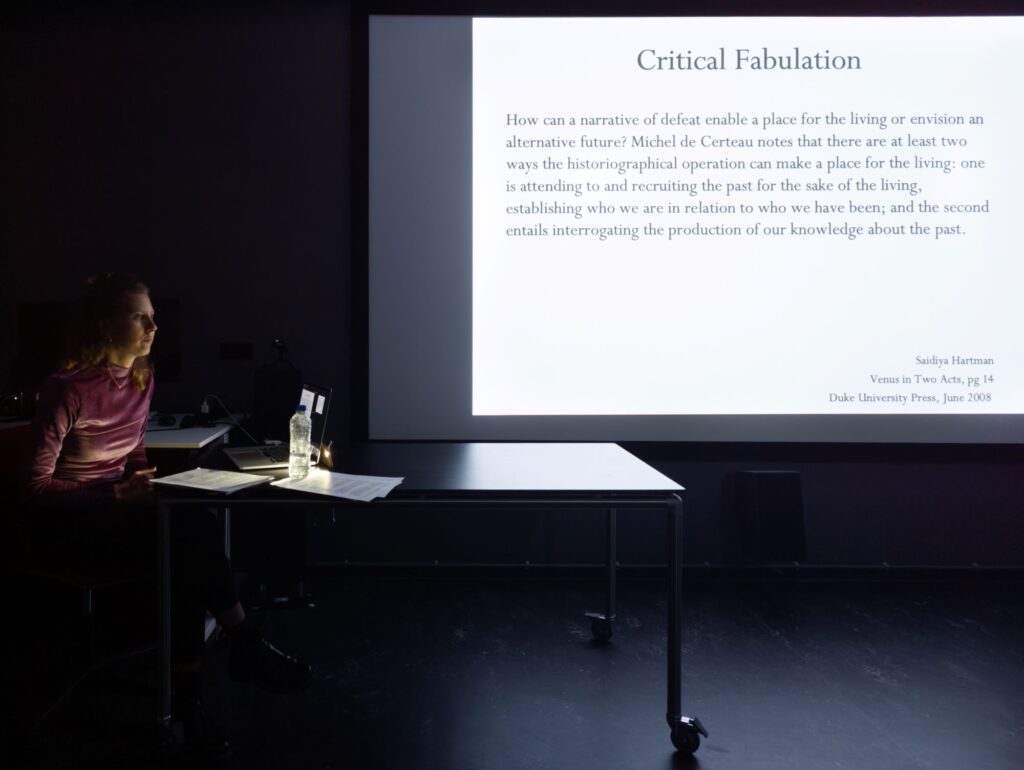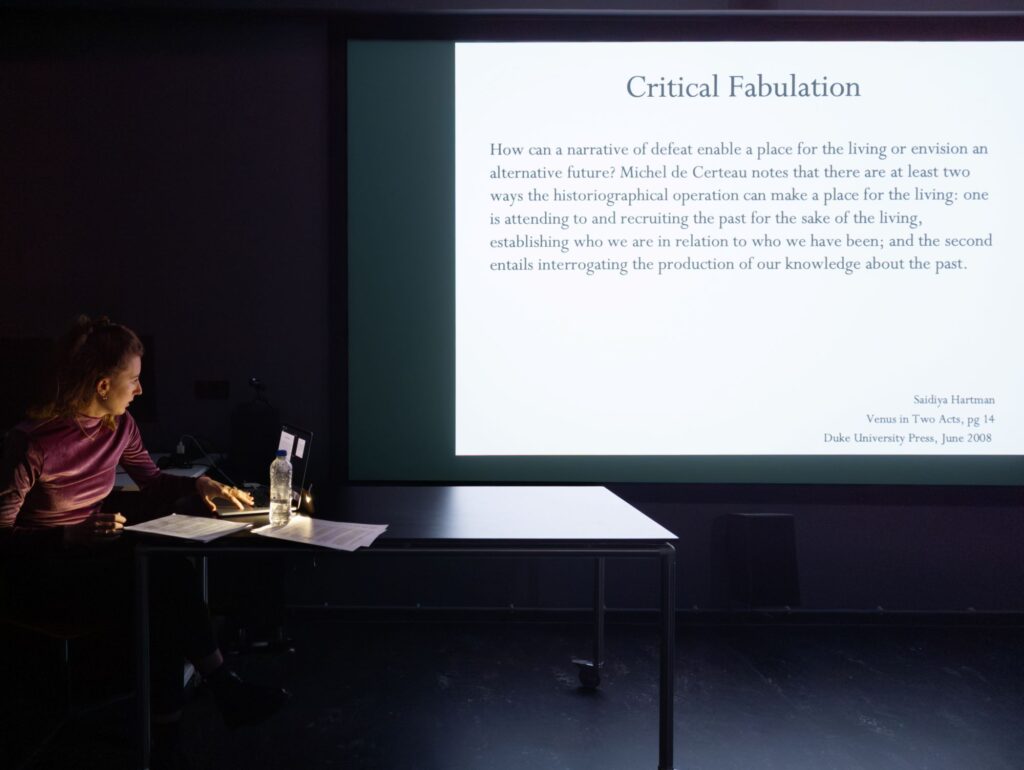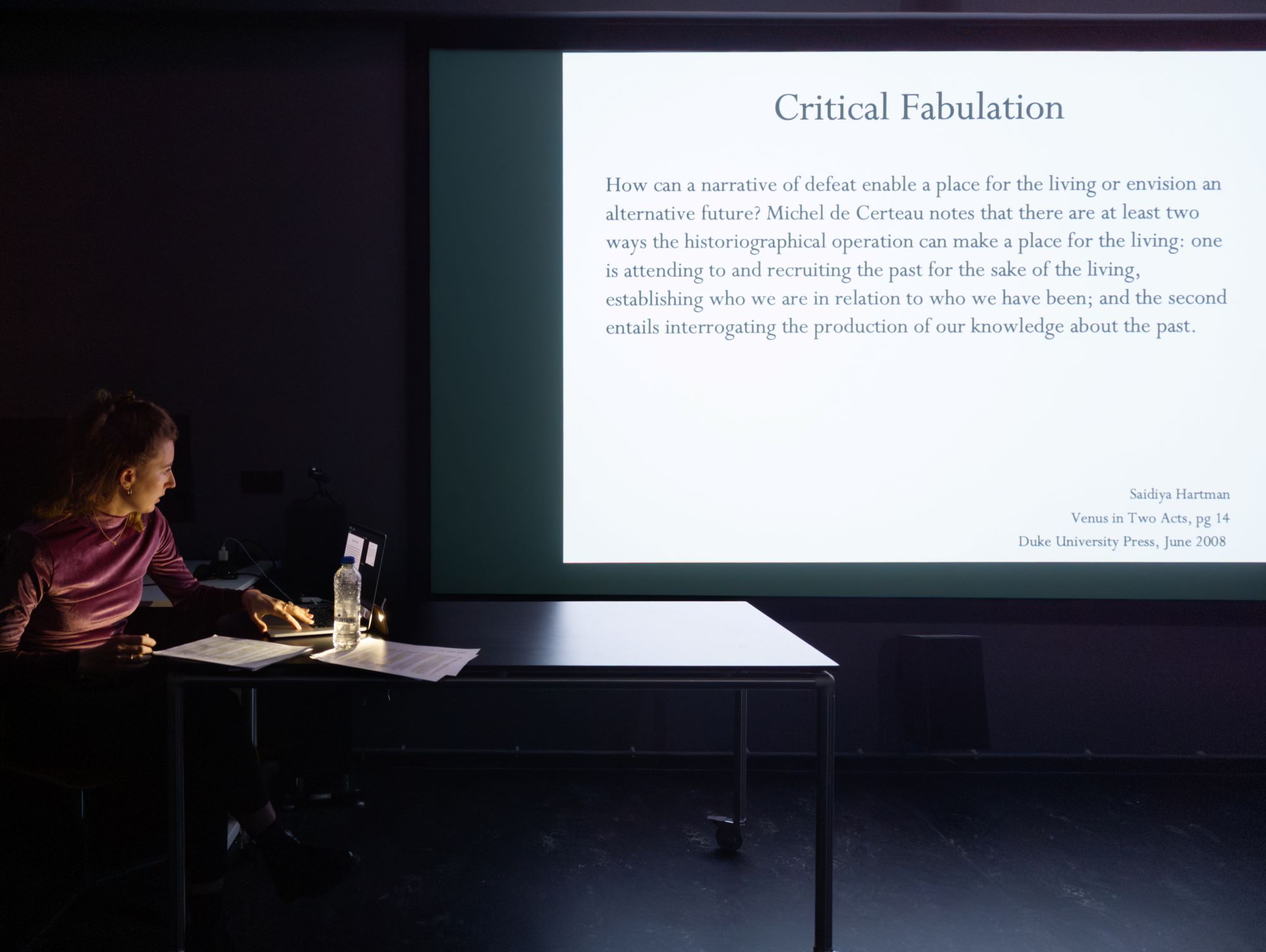| Date | 05/11/2023 |
| Time | |
| Location | WdKA |
| Researchers | |
| Affiliated research project |
|
A workshop given by Judith Westerveld to WdKA Autonomous Practices students, with their teacher Yunjoo Kwak.
Judith Westerveld is an artist and filmmaker who studied Fine Art at the Rietveld Academy and completed a Master Artistic Research at University of Amsterdam. She grew up and lives both in the Netherlands and South Africa. Her work concerns the common violent colonial past of South Africa and the Netherlands and reflects on how the colonial past impacts the present. This past is very present in South Africa, but largely unknown or misconstrued in the Netherlands. Her works concern the question of whose voices are being heard in a post-colonial world, and whose are missing, erased and silenced.
individual works
In 2016, Judith completed a series of works on Jan van Riebeeck’s hedge, a planting of indigenous wild almond trees in South Africa to form a physical boundary of Dutch colonial settlement against the native population in the 17th century. Its site still marks the border of Kirstenbosch in South Africa. Today, it is seen as the first apartheid structure, representing the exclusion and exploitation that shapes South Africa today.
Judith’s works include the video “The Remnant” (2016, 19:45 min), which features two men working at Kirstenbosch Botanical Garden and interweaves their story with Van Riebeeck’s diary. The video “Writing back to history” (2016, 6:56 min loop) uses Jan van Riebeeck’s journal, responding to it by underlining, erasing, marking up its text.
Judith’s live performance and audio installation “Mukalap” (2018) and film “Message from Mukalap” (2021, 14:41 min), are based on an ethnographic sound recording of a man speaking the now-extinct language, !ora. In the work, Judith answers the speaker back in four languages (English, Dutch, Afrikaans, !ora). It is a hauntology of a dead language erased by colonial violence. In the case of Mukalap, even he, as a person, got erased; the exact spelling or authenticity of his name is unsure. The voice remains the only trace of the person. Judith learned fragments of !ora to develop her spoken live performance. She also attended language classes to learn Khoekhoegowab, a sister language of !ora that is still spoken, and worked with teacher Bradley van Sitters to match the translation to the audio message.
Her photo collages “Monetaria moneta” relate to a specific type of shell that was used as a currency in transatlantic slave trade. These shells still wash ashore in Zeeland from wrecked VOC ships. The collages include maps and lists of the West-Indische Compagnie (WIC) and the Middelburgse Commercie Compagnie (MCC) on the slave trade and transported goods, combining them with the photographs of Judith’s performance in the landscape of Zeeland.

Sites of Memory, Returning the Gaze
Sites of Memory is a project and collective that develops a site-specific performance in one Dutch city every year, as “history theater”. It addresses histories of slavery and colonialism, bringing them to the attention of a wide audience. Each performance is based on extensive historical research in collaboration with historians and archivists, including the research project “Mapping Slavery” at Vrije Universiteit Amsterdam (currently coordinated by Nancy Jouwe).
“Returning the Gaze” is a series of three site-specific performances created by Sites of Memory in 2022 that brought to light underrepresented stories about the colonial past of Haarlem, Middelburg and Amsterdam. Questions included: whose voices are being heard or overheard, who is seen, who is represented? The performances were done in collaboration with among others a choreographer, a spoken word artist and a musician.
Sites of Memory adds theatrical elements to this historical research, in a variety of languages. This way of working is based on the concept of Critical Fabulation by Saidiya Hartman (published in Venus in Two Acts, Duke University Press, 2008) which in turn references Octavia Butler’s Afrofuturist time travel novel Kindred as a model for imaging alternative futures. Sites of Memory puts Critical Fabulation into practice. Judith played a role in each performance and created the set design and installations.

TAKEAWAYS ON AUTONOMY
Judith Westerveld finds the concept of autonomy still relevant for her art practice. While it began as an individual work trajectory (very much like “autonomous art” is being understood in the Dutch art, and art school system), it later became important for her to situate autonomy in larger contexts. She felt alone in her autonomous practice, lacking tools such as: art history, philosophy, film, and sound. As a result, she broadened her autonomous practice by making more connections. First, this happened in a more intuitive and personal way. Later, her Master study in artistic research taught her to put her work in a larger context.
She now often works collaboratively where multiple voices and perspectives are extremely important, even if the project still remains hers. She learned through collaboration (such as: learning new languages). In this process, she realized that she needs an open framework while collaborating on equal footing. This means to learn to make decisions together with her collaborators, for example: learning things from collaborators/performers while shooting a film. This almost became a method, to work with a loose framework and fill in gaps collaboratively in the making process.
Sites of Memory was the first collective she was a part of. It therefore meant a shift from her previous individual studio art practice. This was a welcome shift. It was a new experience for her to experience how quickly one can create in a group of people when participants contribute their own perspectives, languages and cultural backgrounds. It is beautiful to have these expressions in the final piece. As a result, she opened up to the idea of working collectively, also in projects that are more autonomous, and to give more consideration to collective ways of working and thinking.

